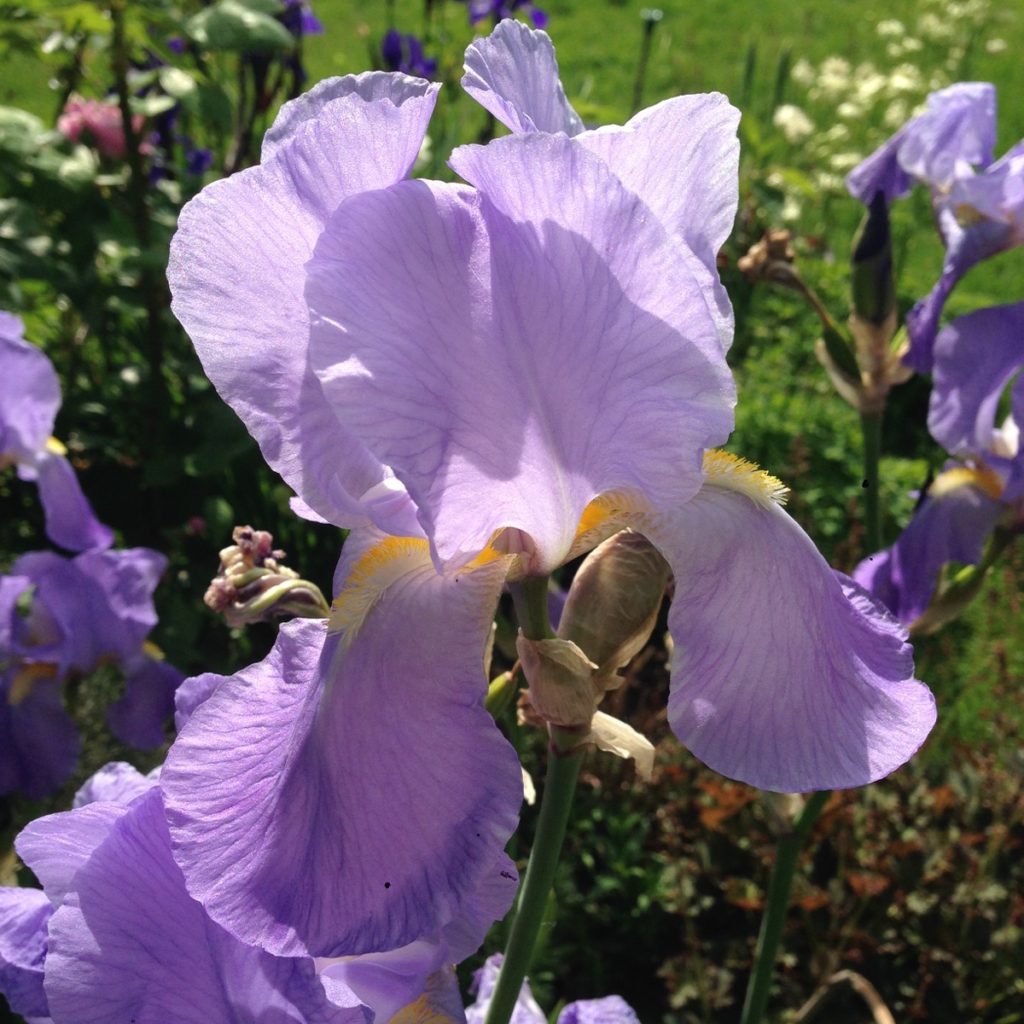
I wouldn’t be without irises. In June, they put on a stunning show in my garden, alongside roses, aquilegia and hardy geraniums. The colours are rich and the flower forms remarkable. I can’t imagine having a garden without them, and they really are easy to grow. For gardeners working on light, sandy soil, they are a must-have, giving you vivid, strong pops of colour, where other, more fussy plants, such as hydrangeas and dahlias, require great effort, watering and feeding.
In Greek mythology, Iris was the personification and goddess of the rainbow, and a messenger of the gods.

‘Iris’ by John Atkinson Grimshaw, 1886
“Now Iris being chief messenger unto/ Juno was sent on her Autumn errand to wither ye flowers and leaves/ On coming atte ye Water Lily, being/ enamoured ye beauty thereof, She/ did hesitate/ and was changed into a rainbow for her disobedience.”
– quotation from an ‘Old Book’, inscribed on the back of the painting.
Bearded Iris (Iris germanica)
These are the flowers you picture when you think of irises. Bearded iris flowers have three upright standard petals and three falls. There are tufts of fine hairs on the standards, and some have horn-shaped appendages on the beard. They’re pretty crazy looking when you think about it, and quite unlike most other garden flowers. The leaves have a glaucus blue hue, are spear-shaped, and fan out around the flower spikes. Depending on the variety – they come in different height categories, from dwarf to tall. They usually flower between May and June, with the flowers reaching up to a metre high.
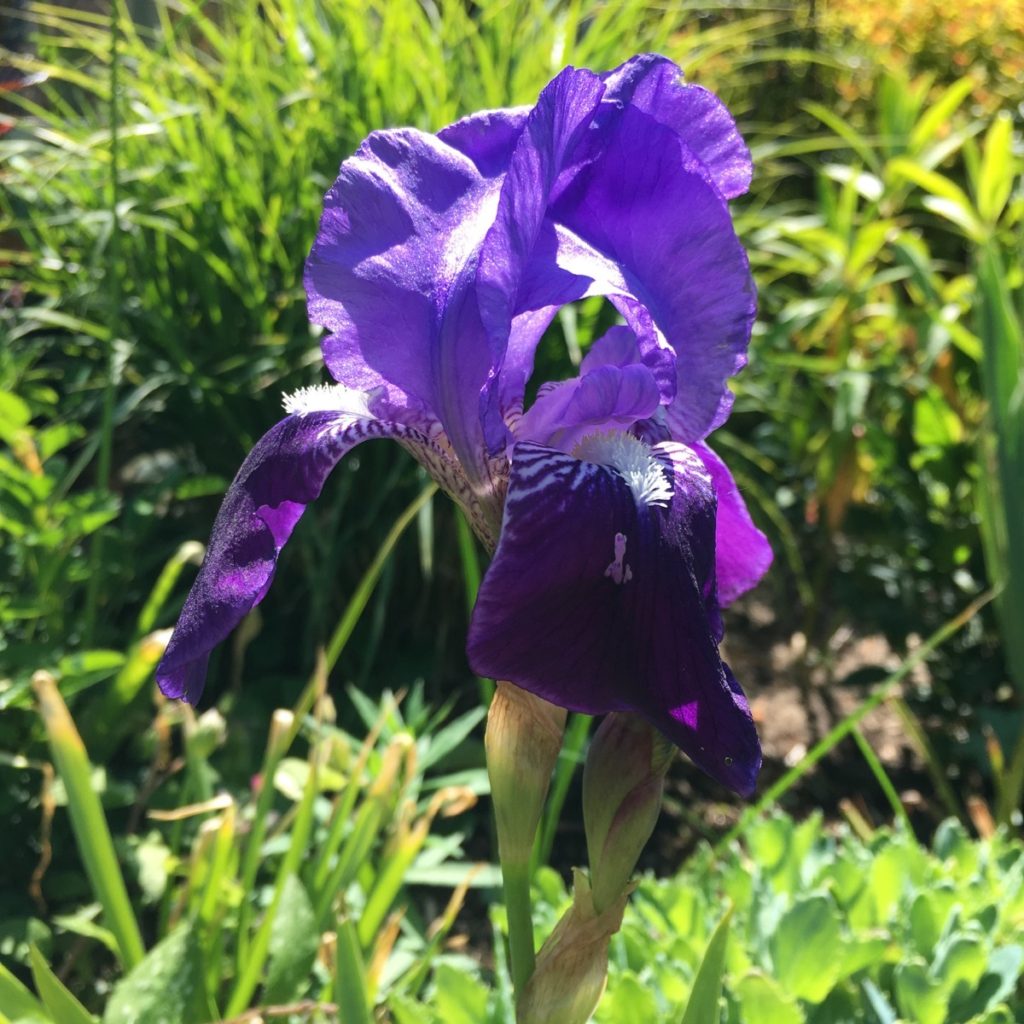
How To Grow
- Plant bearded irises with the upper part of the rhizome partially exposed above the soil. I place mine at the front of borders, with the rhizomes pointing south, so they get a good summer baking and don’t get shaded out. If they look wobbly when you first plant them, and u-shaped wire peg is useful to pin them down while the roots get established. Plant in groups of 3-5 rhizomes, arranged in a fan-shape.
- If you live in an area that is particularly wet – not something we in East Anglia ever have to worry about – plant them on shallow mounds just proud of the soil.
- If your irises are failing to flower it may be because it is too damp, too shady, planted too deeply, or overcrowded.
- Deadhead after flowering. Cut the stems off near the base, and cut off dead leaves where necessary.
- Propagate by division every 3 to 5 years, in September. The rhizomes grow outwards, so clear the centre of the plant to remove the oldest parts. I find it easiest to lift the whole plant and select young, healthy rhizome sections with a good bud. You can usually just snap off any old or shrivelled looking rhizomes.
- Cut back the foliage on the remaining plants by two-thirds using scissors to make an inverted v-shape. Then replant.
The RHS has a good, detailed propagation guide, with handy pics.
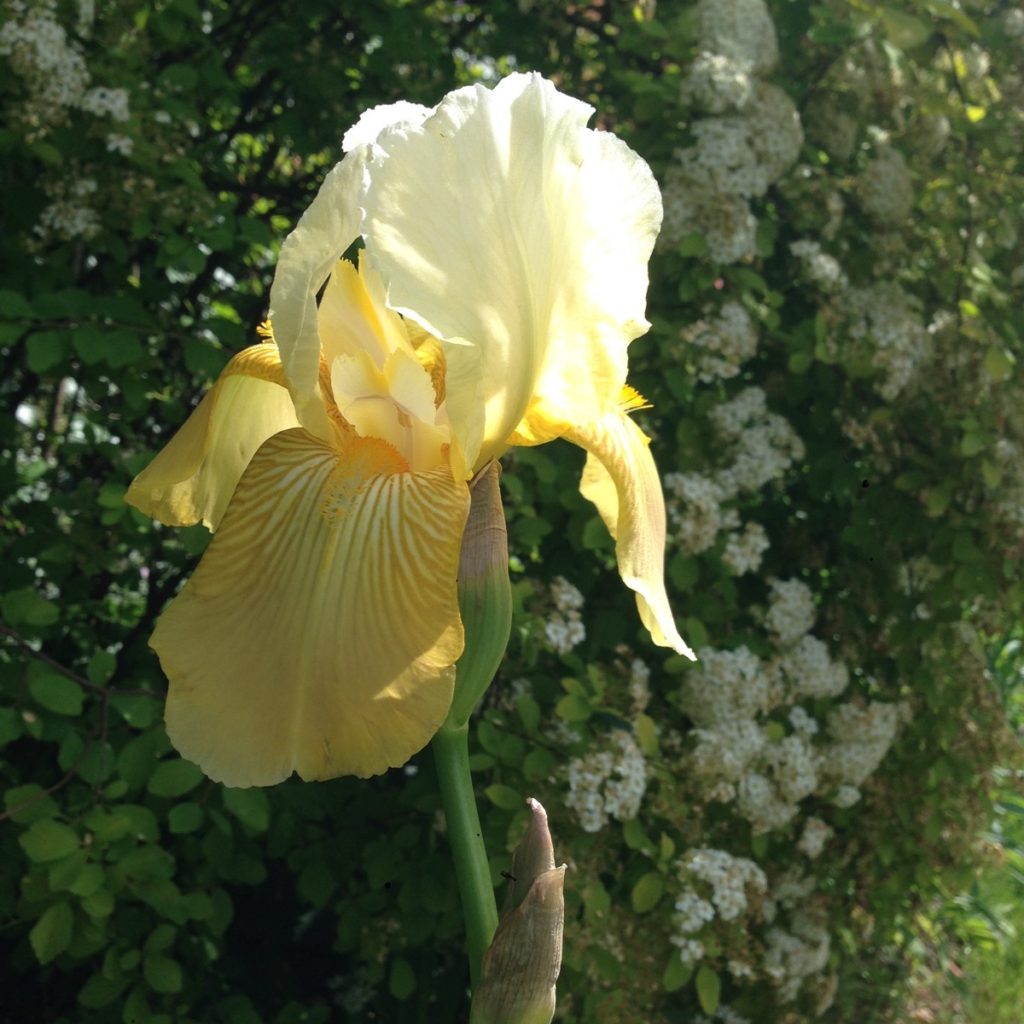
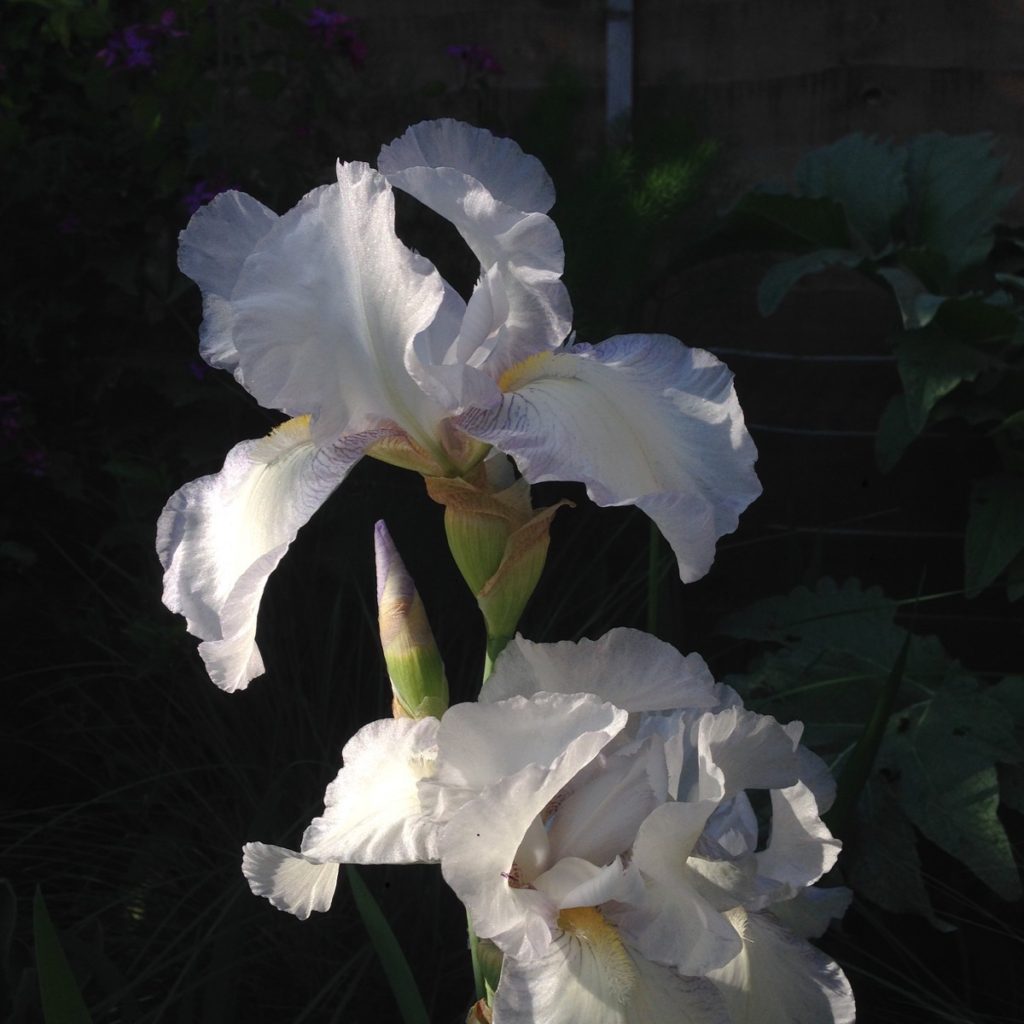

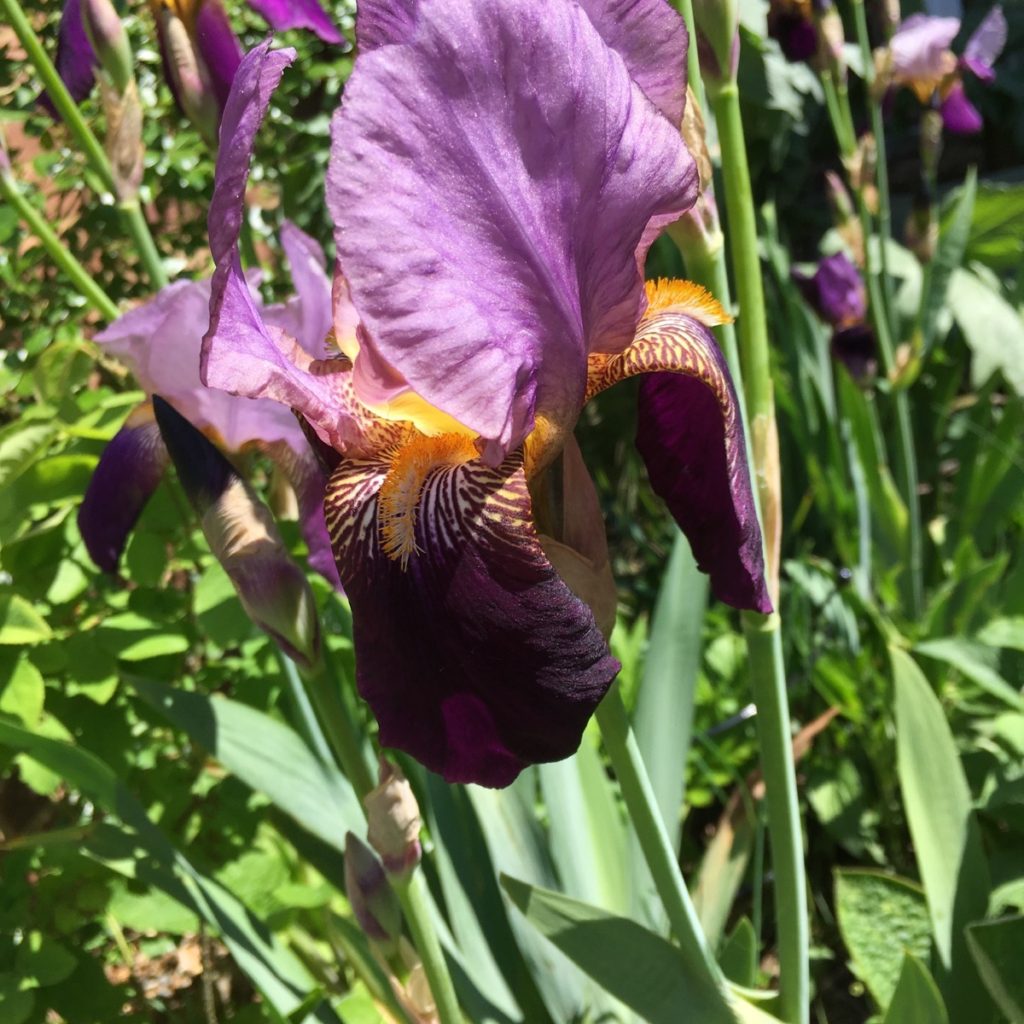
Siberian Iris (Iris sibirica)
These irises are somewhat easier to grow that bearded ones. The flowers are be smaller, and more delicate. Their leaves are narrower and greener, forming tall, grassy clumps, through which thin flower spikes reach up to around 60-120cm high. The flowers have three upper standard petals and three falls, but no beards! A mature plant can send out more than twenty flower stems, from late April to early summer. Plant in the centre or corner of a sunny border, with aquilegia, lupins, peonies and phlox.
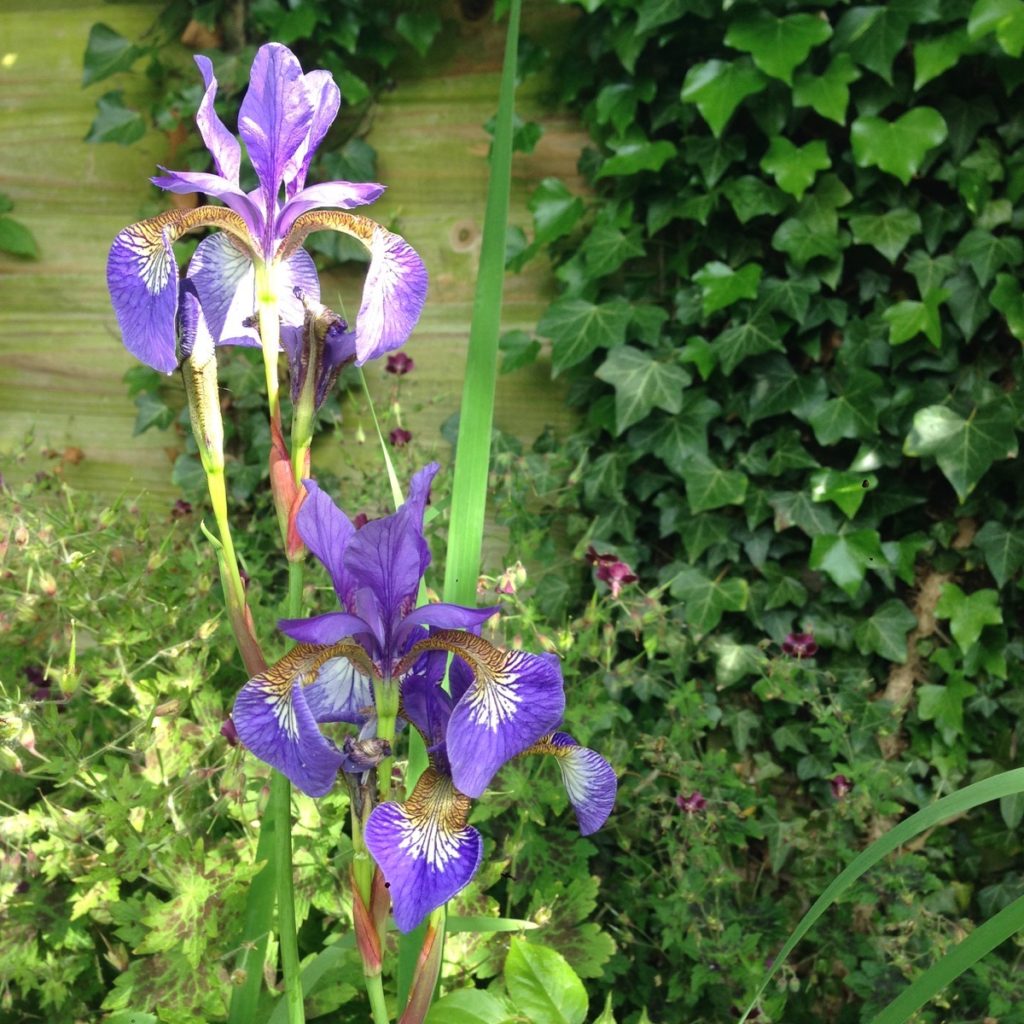
How To Grow
- Make a shallow hill of soil in the centre of the planting hole, place the rhizome on the hill with the roots spread around it, fill the hole with soil, and pack it tight. Ensure the crowns are just 2-3cm below the soil level. If you’re on sandy soil, they can be a bit deeper (6cm).
- Water regularly during the first year, ideally keeping the plant fairly moist for the first couple of months.
- Remove spent flowers to keep seedheads from forming.
- In late autumn, cut foliage to the ground.
- Divide clumps every three to five years in early spring or September. Lift the whole plant, shake off the soil, and carefully tease the rhizomes apart. Cut the rhizomes to remove old, spent pieces, leaving each new, healthy piece with two fan divisions.
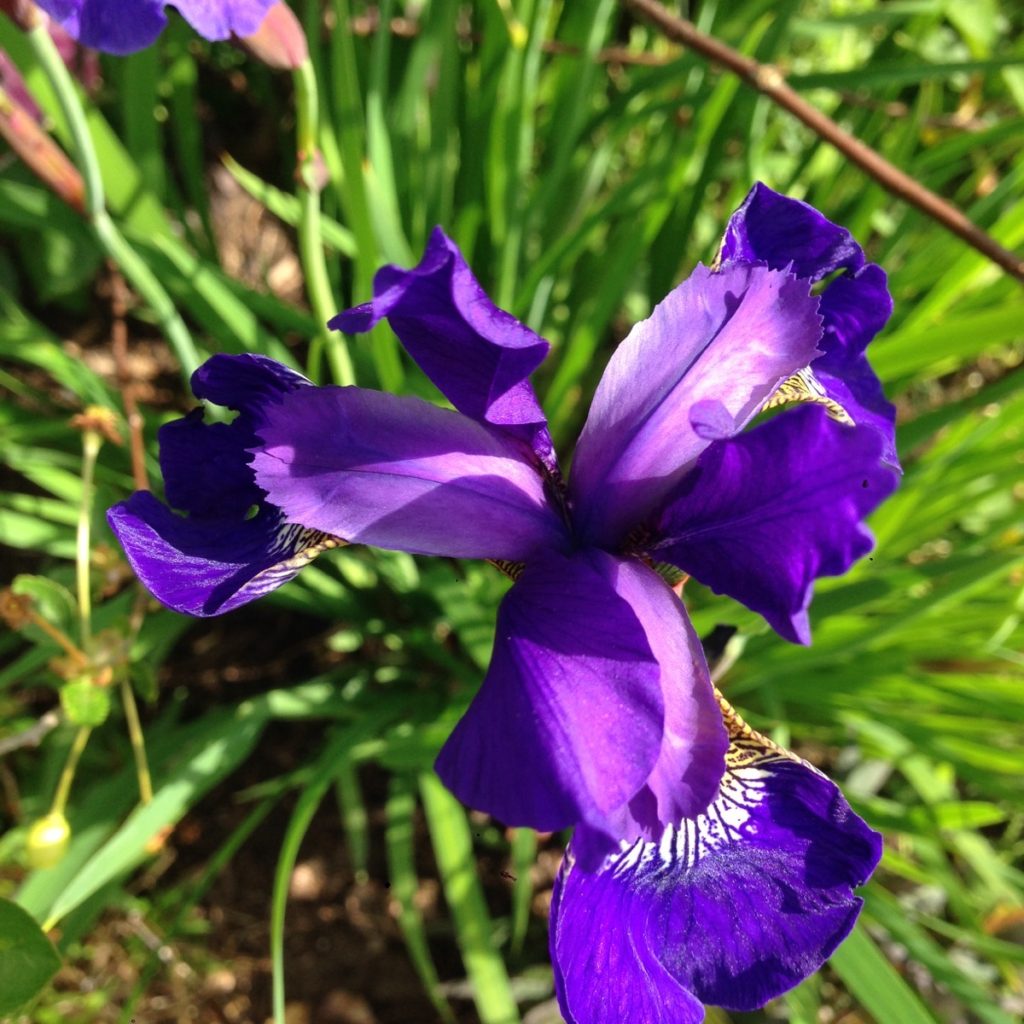
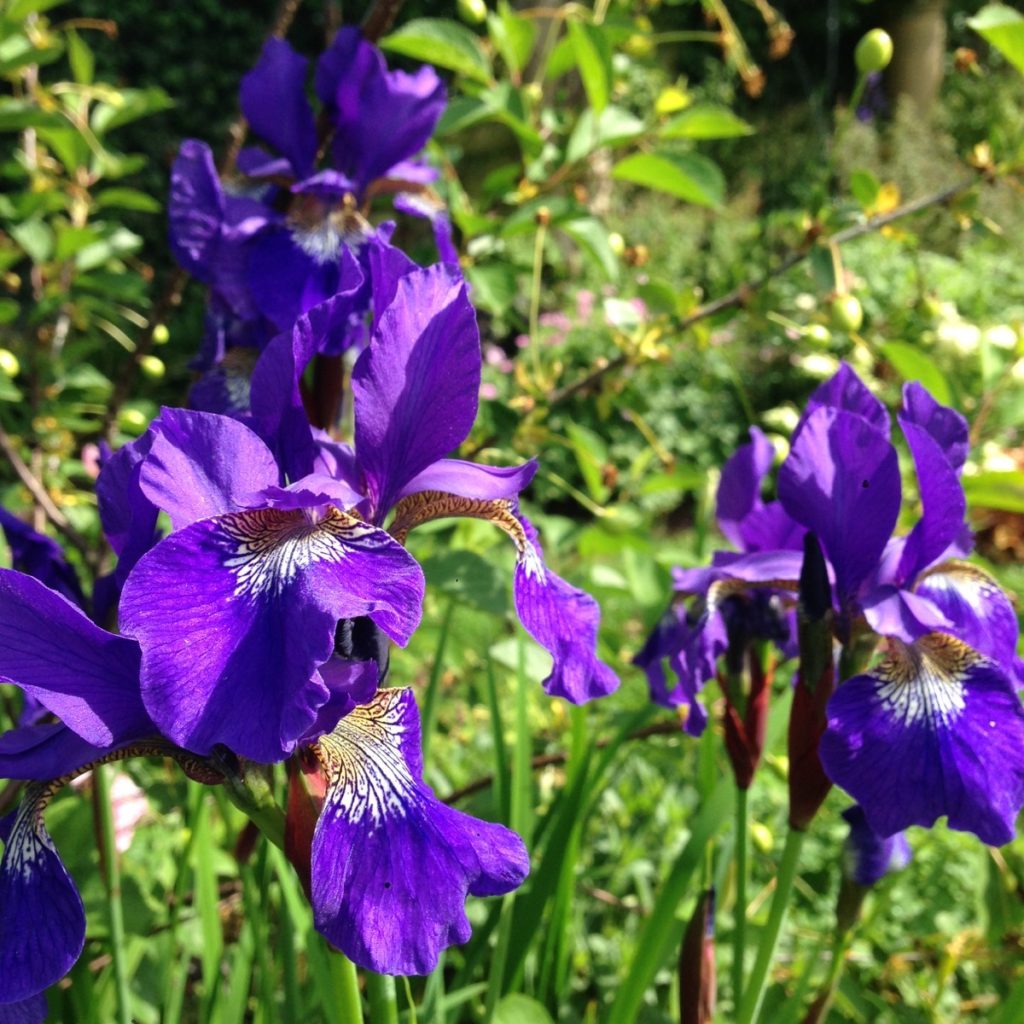
Bulbous irises
This group of irises are the easiest of all to grow. They have narrow leaves, and stiff stems that bear flowers with three spreading or pendent fall petals, alternating with three erect, often smaller, standard petals. Depending on the variety, they flower in late winter, spring or early summer. Shorter varieties, such as I. reticulata or I. histrioides flower in spring, reaching 10-15cm high, and look good in lawns or planted in wide, shallow, terracotta pots on garden tables. Taller varieties, such as I. x hollandica look great in borders amongst perennials, with the flower stems reaching around 50cm high in May-June.
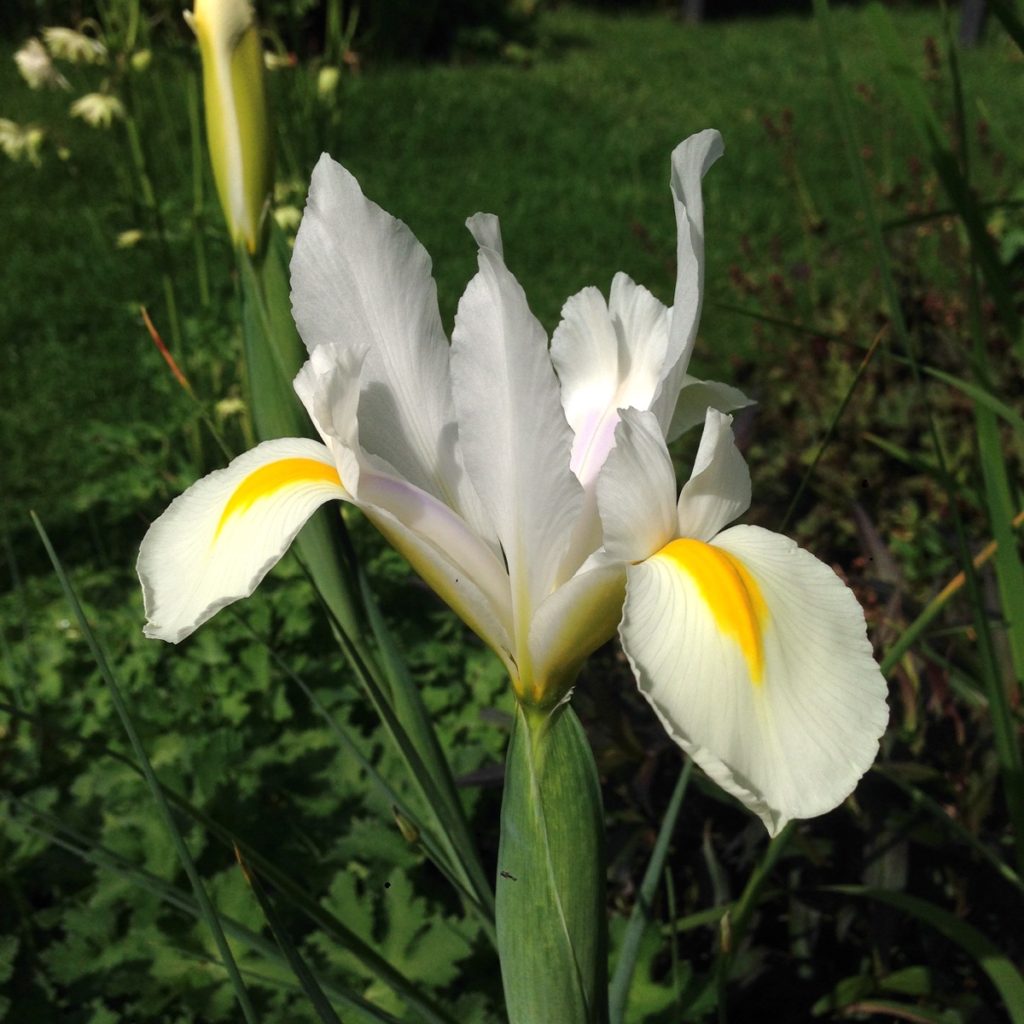
How To Grow
- Plant the bulbs in autumn in a sunny position, ideally in well-drained, sandy soil – if you’re on heavy soil, add generous quantities of grit. Plant them at a depth twice the height of the bulb, and space them at least 6cm apart.
- They should come back year after year, so don’t need much care. But if they become too congested and aren’t flowering well – I find that they self-propagate by seeding around – you can lift and replant the bulbs in early autumn.
——
All of the irises pictured are from my garden. I’m afraid I don’t know the names of most them – they were nearly all given to me by family members, as divisions from their own gardens, or bought unnamed at plant sales. I do know that the white bearded iris is a Sissinghurst variety, as I remember buying it from the Iris Society stall at a Helmingham Hall plant fair a few years ago, but sadly the label is lost. It might be I. ‘White City’.
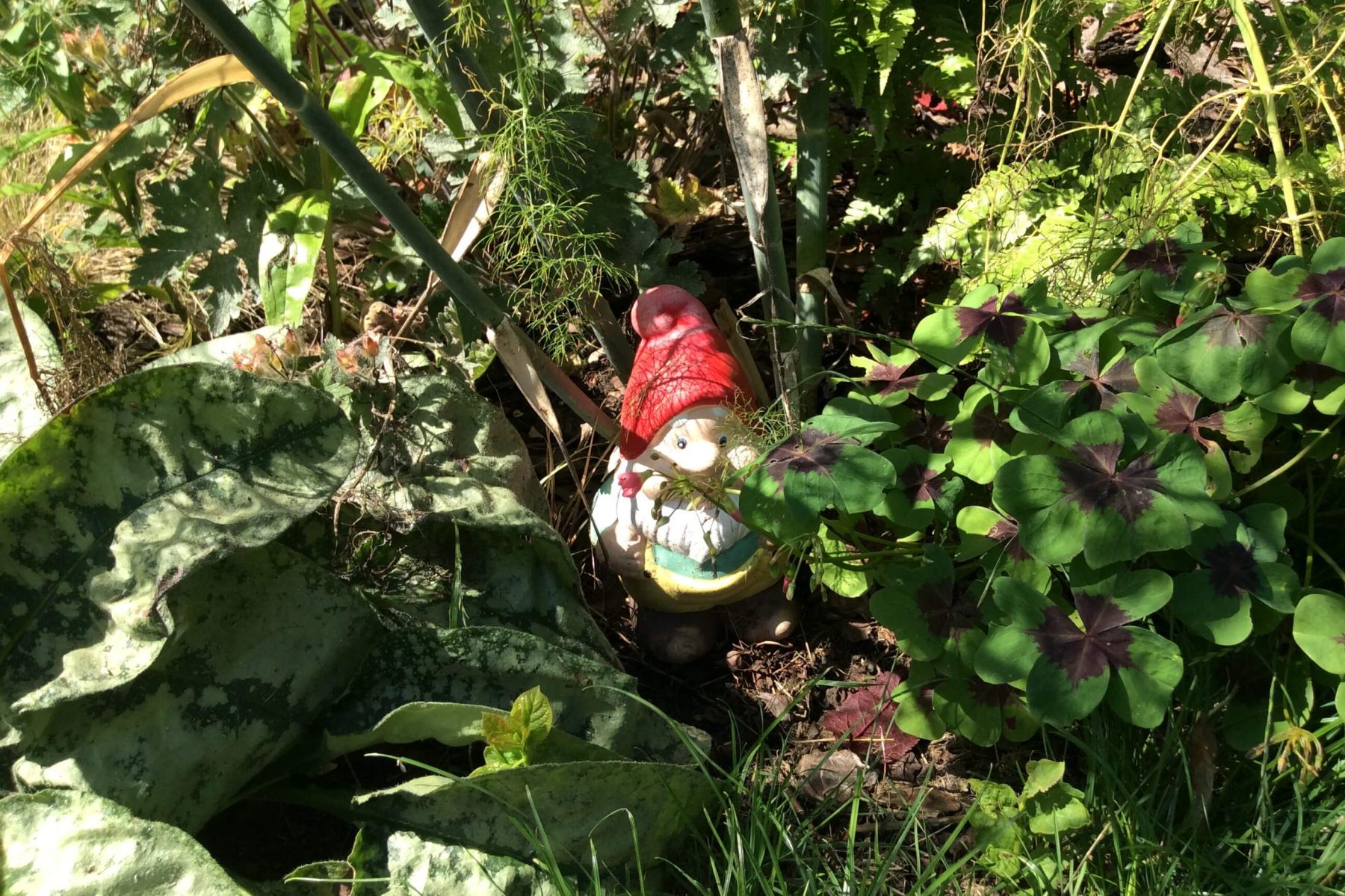
2 comments for “I is for Irises :: A to Z of Gardening”